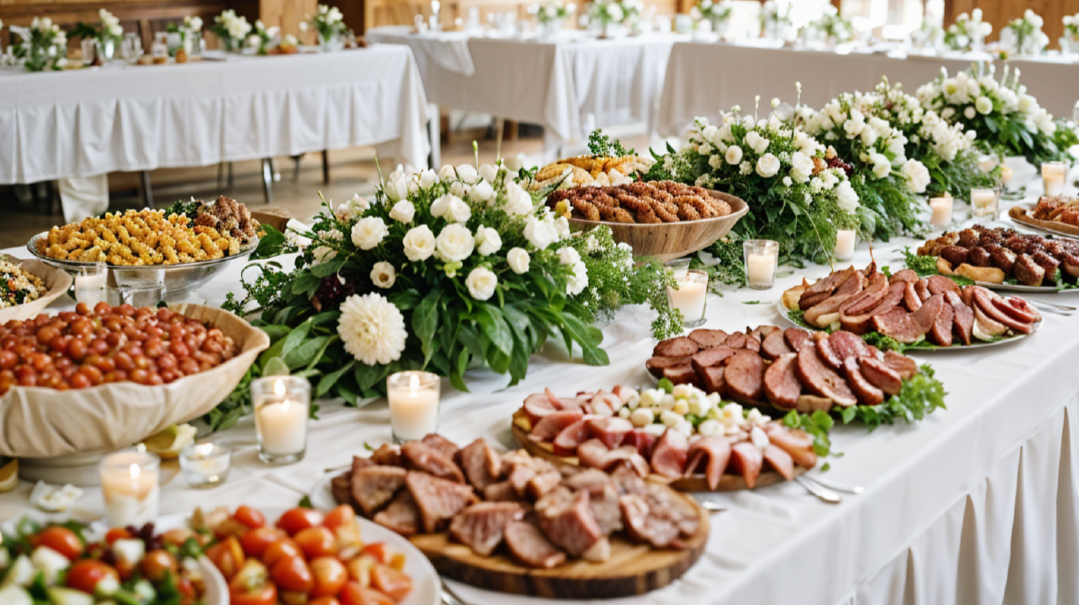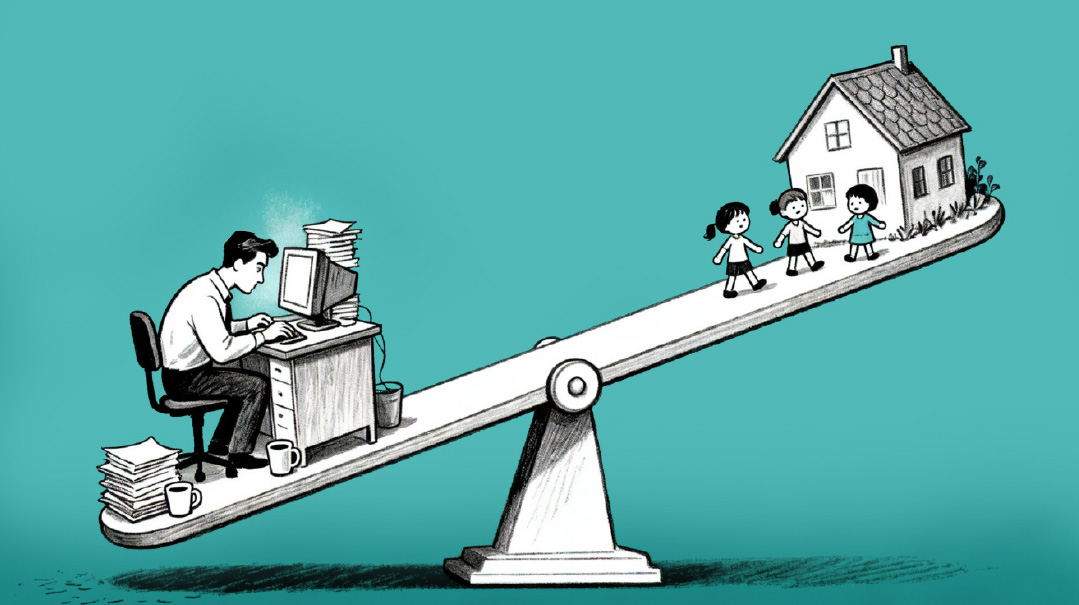Beyond the Meat Boards
| June 25, 2024Is this really why I’m here? Did I really come to a wedding to eat? Is that all a Jewish wedding has to offer?

S
ome years ago, I was invited to a wedding that, given the parties involved, I knew would have a shmorg that met my most elaborate expectations: an endless variety of sushi, numerous meat boards, a plethora of hot dishes, and so on.
I prepared well for the grand affair by eating next to nothing the entire day. It was to be a day of fasting to feasting, and well worth saving the room in my stomach.
Waze told me I would get there with at least an hour to spare — ample time to enjoy the entire gamut of gastronomical delights.
But then disaster struck. Traffic ground to a halt. The Waze ETA began creeping up... and up… and up. Apparently, there had been a big accident up ahead, and the highway was transformed into a parking lot as emergency personnel worked the scene.
I shifted into neutral. The idling of the motor gave way to the grumbling of my stomach.
A torturous 45 minutes went by. Finally, the traffic began to move. I drove as fast as I could, within the bounds of safety and the law, hoping against hope that the shmorg had somehow been prolonged.
It wasn’t. I arrived to find the long tables — empty — save for some vegetable salads. (I don’t like vegetable salads.)
And as I choked down forkfuls of greenery, I was suddenly hit by a sense of shame.
Is this really why I’m here? Did I really come to a wedding to eat? Is that all a Jewish wedding has to offer?
I was aware that much is discussed in the seforim about the deeper meaning of weddings, and I decided, right then and there, to discover what that was.
What follows is a brief summation of some of the ideas I found.
Rabbi Aryeh Kaplan (Made in Heaven: A Comprehensive Wedding Custom Guide) brings many sources for the idea that a chuppah is like Har Sinai. The candles that the parents hold as they walk down to the chuppah are meant to represent the fire at Har Sinai. Rav Gavriel Zinner, in his sefer Nitei Gavriel on weddings, says that Rav Chaim Sanzer was afraid to even lift his eyes or make a move at a chuppah due to the presence of the Shechinah. Other tzaddikim would do teshuvah at a chuppah and would sit with great yiras Shamayim.
Clearly, a chuppah is a very exalted event. But who is the true baal simchah at a wedding?
Rav Tzvi Meir Silberberg says it’s Hashem. When a Jewish wedding takes place, Hashem is the real Father — of both the chassan and the kallah. The establishment of a bayis ne’eman b’Yisrael is a true simchah for Him.
Perhaps we can explain Hashem’s exultation at a wedding in light of a concept we find in the first chapter of Mesillas Yesharim. Hashem is Tov, and He created the world to be meitiv, to bestow good upon His creations.
Hashem’s purpose in creation was that He wanted to give to us, and we are taught that we must emulate His ways: Mah Hu rachum, af atah heyeh rachum — just as He is Merciful, we too must be merciful. Although one can fulfill the virtue of “giving” with any human being, it is ideally realized in the context of a marriage. Rav Gamliel Rabinovich, in his introduction to Tiv Hachesed, quotes Rav Chaim Vital as saying that a person is judged on bein adam l’chaveiro and v’ahavta lerei’acha kamocha mainly within the context of his or her marriage.
But the coming together of chassan and kallah is not the only cause for Hashem’s celebration. When we attend weddings, we are actually expanding the Shechinah’s presence in the world.
This is a concept that Rav Shlomo Wolbe addresses in Alei Shur (volume 1, page 256). We know there is a special mitzvah to make a chassan and kallah happy. Rav Wolbe asks: Isn’t it a mitzvah to make any Jew happy? What is unique about a chassan and kallah? Rav Wolbe answers based on the Gemara in Shabbos (30b), which teaches that “ein haShechinah shoreh elah mitoch simchah — the Shechinah only dwells amid joy.”
When a chassan and kallah set out to build a home, it is our foremost aspiration that this home be filled with the Shechinah. Since the Shechinah “dwells amid joy,” this necessitates an increase in simchah. Thus, we try our hardest to provide as much joy as we can to the chassan and kallah.
Rav Wolbe goes on to explain that this stems from the Shechinah’s presence at Matan Torah. This is what lies behind the Gemara’s teaching (Berachos 6b), “Anyone who takes pleasure from the seudah of a chassan and kallah but does not give them joy violates ‘five kolos.’ ” What are these kolos that the Gemara refers to? Rav Wolbe says these are the kolos of Matan Torah. At every Jewish wedding, the eternal roar of Matan Torah reverberates.
There is a prevalent custom at a chuppah to provide pamphlets containing chapters of Tehillim and various tefillos. I have not found a specific source for the idea that davening at a chuppah holds particular significance but, given the above, it seems logical. If Rav Chaim Sanzer was afraid to lift his eyes or make a move at a chuppah because of the Shechinah’s presence, we can certainly assume that it is an opportune time to daven.
And having said that, the inverse is obvious as well. Using the 20 minutes of “chuppah spare time” to catch up with old friends would certainly seem to be squandering a very sacred opportunity. (Women seem to sense this intuitively. My admittedly passive-aggressive remarks are directed at myself and others on my side of the mechitzah.)
I still enjoy a good shmorg. And when I drive to weddings, I still beg the ETA to behave. But now, I think it will listen.
After all, it doesn’t want to miss the chuppah either.
Boruch Leff is a rebbi in Baltimore, an editor, and the author of six books.
(Originally featured in Mishpacha, Issue 1017)
Oops! We could not locate your form.







